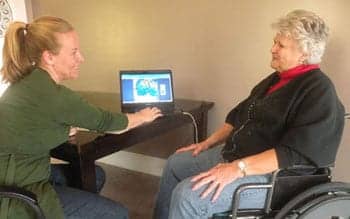by Scott Baltic
Last Updated: 2007-11-01 14:08:08 -0400 (Reuters Health)
NEW YORK (Reuters Health) – Although the varied clinical presentations of hemiparkinsonism-hemiatrophy syndrome (HPHA) suggest a heterogeneous pathogenesis, perinatal and early childhood cerebral injury may play an important role in about half of cases, new findings suggests.
A study of 30 patients with HPHA was carried out by researchers at Baylor College of Medicine, Houston, and appears in the October 16 issue of Neurology.
Dr. Joseph Jankovic and Dr. Subhashie Wijemanne note that HPHA, a relatively rare form of parkinsonism, is marked by atrophy on one side of the body, often from early in life, and by hemiparkinsonism (initially ipsilateral), which usually appears later in life.
Clinical features that distinguish HPHA from idiopathic Parkinson disease include the unilateral dystonia (which typically spreads to the other side eventually), relatively slow progression and variable response to levodopa.
The age at onset of a movement disorder for the 30 patients (18 female) ranged from 15 to 63 years. The left and right sides of the body were equally represented.
All patients presented with bradykinesia and rigidity. Tremor was present in 21 (70%), and was the presenting sympton in 12. Twenty-one patients had dystonia, and in 15, dystonia was the presenting symptom. Eleven patients had scoliosis.
Hemiatrophy was defined as a unilateral loss of body mass in at least two body regions: face, head, arm, hand, leg, foot or trunk. For example, many HPHA patients have feet of different sizes.
Of the 19 patients for whom a birth and early childhood history was available, 9 had cerebral insults associated with difficult labor (4), premature birth (3), severe febrile illness (1) or gunshot injury to the head at age 6 years (1).
Response to levodopa ranged from good (18) to moderate (6) to poor (6).
Dr. Jankovic told Reuters he believes that prenatal/perinatal insult in HPHA cases is even more common than has been documented. "I also suspect that some patients with otherwise typical Parkinson’s disease may have an insult or genetic defect that results in fewer than normal dopaminergic neurons before birth," so that age-related attrition of these neurons leads to parkinsonism in mid-life.
"Patients with parkinsonian symptoms, when confined to one side for a long time without crossing over to the other side, should be screened for the HPHA syndrome, and their perinatal history should be carefully reviewed," Dr. Jankovic suggested.
Neurology 2007;69:1585-1594.




